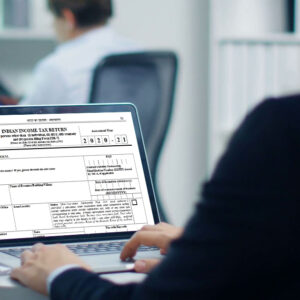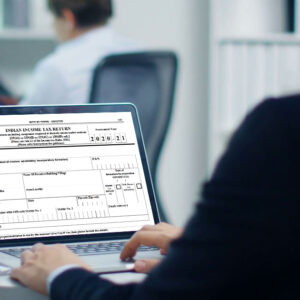TDS Return Filing
₹3,728.00 – ₹7,550.00
TDS return filing for one quarter
Offers and discounts
| Accounting Software 1 Year, Unlimited Users LEDGERS License |
| GST Invoice Save 18% by Availing GST Credit on Purchases |
Description
TDS Return Filing
What is TDS return filing?
Apart from depositing the tax the deductor also has to do TDS return filing. TDS return filing is a quarterly statement that is to be given to the Income Tax department. It is necessary to submit the TDS returns on time. TDS return filing can be done completely online. Once the TDS returns are submitted the details will come up on Form 26 AS. While filing the TDS returns the various details to be mentioned are:
- PAN of the deductor and the deductee.
- Amount of tax that is paid to the government
- TDS challan information
- Others, if any.
What is TDS?
Tax deducted at source or TDS is the tax that is collected by the Government of India at the time when a transaction takes place. Here, in this case, the tax is to be deducted at the time the money is credited to the payee’s account or at the time of payment whichever happens earlier.
In this case of salary payment or the life insurance policy, the tax is deducted at the time when the payment is done. The deductor is required to deposit this amount with the Income Tax Department. Through TDS a portion of the tax is paid directly to the Income Tax Department. The Tax is deducted usually over a range of 10%.
What is TAN?
TAN or the Tax Deduction and Collection Number is a mandatory 10 digit alpha number that is to be obtained by all the people who are responsible for deducting tax at source or tax collection at source on behalf of the government. Salaried individuals are not required to obtain TAN or to deduct the tax at the source.
In the case of the proprietorships businesses and other entities are required to deduct tax at the source while making certain payments like the salary, payments to the contractor, payment of rent that is exceeding Rs.2,40,000 per year. IndiaFilings can help in obtaining the TAN registrations.
The entities that have a valid TAN registration have to file the TDS returns quarterly. Our TDS experts can help in computing the TDS payments and file the TDS returns while complying with the TDS regulations.
Eligibility Criteria
Who can file TDS returns?
TDS return filing is done by organizations or employers who have availed a valid tax collection and deduction number (TAN). Any person who is making specified payments mentioned under the Income Tax Act is required to deduct the taxes at the sources and they are needed to deposit the tax within the stipulated time for making the following payments.
- Salary Payment
- Income on securities
- Income by winning the lotteries, puzzles, and others.
- Income from winning horseraces
- Insurance commissions.
- Payment concerning the National saving scheme and many others.
Due Date for TDS Return filing
What are the due dates for TDS return filing?
The due date for the payment of the TDS deducted is the seventh of the next month.
| Quarter | Period | Last Date of Filing |
|---|---|---|
| 1st Quarter | 1st April to 30th June | 31st July 2021 |
| 2nd Quarter | 1st July to 30th September | 31st October 2021 |
| 3rd Quarter | 1st October to 31st December | 31st Jan 2022 |
| 4th Quarter | 1st January to 31st March | 31st May 2022 |
How to file TDS returns online?
Here is the step-by-step procedure to file the TDS returns online.
- Firstly, Form 27 A containing multiple columns has to be filled and in case of the hard copy of the Form, it has to be verified along with the E-TDS return that has been filed electronically.
- In the next step, the tax that is deducted at the source and the total amount that has been paid needs to be correctly filled as well as tallied.
- The TAN of the organizations is to be mentioned on Form 27 A. There will be difficulties in the process of verification if the mentioned TAN is incorrect.
- While filing the TDS returns the appropriate challan number, the mode of the payment, and the tax details have to be mentioned. In case of the incorrect challan number or the incorrect date of the payment, there will be a mismatch and the TDS returns also need to be filed again.
- To bring consistency the basic Form used for Filing the e-TDS must be used. The 7 Digit BSR has to be entered for easing the tallying process.
- Physical TDS returns are to be submitted at the TIN FC, which is managed by NSDL. In case of the online filing, they can be submitted on the official website of the NSDL TIN.
- If the provided information is correct then a token number or a provisional receipt is received. This is a proof that TDS return has been filed.
- In case of rejection, a non-acceptance memo along with the reason for the rejection is issued and the returns have to be filed again.
TDS Return Form
What are the different types of TDS Forms?
TDS forms are depending on the income of the deductee or the type of deductees paying taxes. The TDS forms are mentioned below:
| Form | Periodicity | Particulars |
|---|---|---|
| Form 24Q | Quarterly | The quarterly statement for TDS from “Salaries” |
| Form 26Q | Quarterly | Quarterly statement of TDS in respect of all payments other than “Salaries” |
| Form 27Q | Quarterly | Quarterly statement of TDS from interest, dividend, or any other sum payments to non-residents |
| Form 27EQ | Quarterly | Quarterly statement of collection of tax at source |
TDS Form 24Q
Under Section 192 of the Income Tax Act 1961, an employer deducts the TDS while paying the salary to an employee. An employer has to file the Salary TDS returns in Form 24 Q, which needs to be submitted every quarter. The details of the salary that are paid to employees and the TDS deducted from the payment are to be specified in Form 24 Q. In other words, Form 24 Q is the quarterly statement of the payment that is made to the employee and the TDS is deducted that is made by the deductor.
TDS Form 26Q
When a taxpayer is paying the taxes the payee is deducting TDS on certain occasions. Form 26Q is used to file TDS details on the payments that are made other than salary. The Form mentions the total amount that is paid during a particular quarter and the TDS amount that has been deducted. It is necessary to submit Form 26 Q every quarter.
Form 27Q
Form 27 Q is a TDS return or a statement that contains the details of the Tax Deducted at Source on payments other than salary made to a Nonresident India and foreigners. Form 27 Q is to be furnished every quarter or before the due date. Form 27 Q contains the details of the payments that are made and the TDS deducted on payments is made to the NRI by the deductor.
Form 27EQ
Form 27 EQ contains all details about tax that is collected at the source. According to Section 206 C of the Income Tax Act 1961, this form has to be filed every quarter. The Form has to be submitted by both corporate and the government collectors and the deductors.
What is a TDS Certificate?
After the TDS is deducted by the deductor it is necessary to furnish the TDS Certificate. The deductee can cross-check the tax credit by viewing a valid TDS certificate from TRACES that bears a 7 digit unique certificate number and a TRACES watermark.
The TDS certificates are to be preserved by the deductee. TDS certificates on payments other than salaries are issued every quarter and the TDS certificate for the salary is provided on annual basis.
In case the deductee loses possession of the certificate he can request to get a duplicate TDS Certificate.
Penalty for failure in filing the TDS returns
If the assessee is failing to file the TDS returns before the due date then there is a penalty of Rs.200 under Section 234 E per day by the assessee until the time the default is continuing.
Non Filing the TDS returns
If the assessee has not filed the return within a year from the date of filing then the returns or if the person has furnished incorrect information then he or she will also be liable for a penalty. The penalty levied is not less than 10,000 and more than Rs. 1,00,000.
Revised TDS Returns
Once the TDS returns are submitted and errors are detected like incorrect challan details or the PAN is not provided or incorrect PAN is provided then the tax amount credit with the government will not be reflected in the Form 16A / Form 26AS. To make sure that the amount is properly credit and reflected in Form 16/ Form 16A / Form 26 AS a revised TDS return has to be filed.
Prerequisites for submission of Revised TDS returns
The revised TDS returns can be filed only when the original TDS return is accepted by the TIN central system. The assessee can check the status of the TIN Central System. The assessee can check the status of the TDS returns that are filed online by providing the required details such as the PAN and the Provisional Receipt Number/ Token number on NSDL.
The revised TDS returns have to be prepared by using the most recent consolidated TDS statement. The certificate can be downloaded from the TRACES website.
Claiming TDS return
TDS Credit can be claimed by the deductor to claim the credit of the TDS the deductee must mention the details of the TDS in his returns of income. The deductee is required to take due care to quote the correct TDS certificate number and the TDS details while filing the returns of income.
In case of incorrect details that are provided by the deductee, there will be a discrepancy with the tax credit of processing the TDS returns.
Additional information
| Price | Basic, Standard, Premium |
|---|
Related products
-
- -24%
- Income tax
ITR-5 Return Filing
- ₹7,550.00 – ₹10,601.00
- Rated 0 out of 5
- Select options
Add to WishlistAdd to Wishlist -
- -31%
- Income tax
Business Tax filing
- ₹1,989.00 – ₹6,024.00
- Rated 0 out of 5
- Select options
Add to WishlistAdd to Wishlist -
- -20%
- Income tax
Form 16 Issuance
- ₹200.00 – ₹300.00
- Rated 0 out of 5
- Select options
Add to WishlistAdd to Wishlist -
- -24%
- Income tax
ITR-7 Return Filing
- ₹7,550.00 – ₹12,126.00
- Rated 0 out of 5
- Select options
Add to WishlistAdd to Wishlist








Reviews
There are no reviews yet.